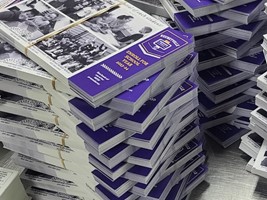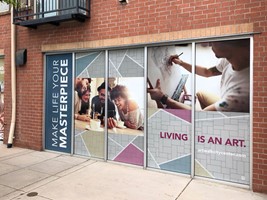The business card has come a long way since its inception centuries ago.
It has become an essential part of every company's identity. But what is its origin, and why is it relevant in business today?
Where Did Business Cards Come From?
In the 15th century, China introduced "visiting cards."
Essentially, people carried small cards to showcase their importance. Visiting cards were considered a tool for self-promotion and were utilized to request meetings.
What are Trade Cards?
Trade cards were invented in the 17th century to help people find businesses in major cities where addresses were uncommon.
During the 17th century, people followed a strict code of etiquette when interacting with each other. With the onset of the industrial revolution in the 18th and 19th centuries, this formality began to blur the line between social and trade interactions.
People needed a way to introduce themselves and their businesses, which led to the creation of business cards.
What Were the Most Popular Print Options for Early Business Cards?
The print industry significantly changed in the 18th century, with copperplate engraving losing popularity in favor of the more modern woodcut and letterpress printing.
The 19th century pushed the envelope even further with the introduction of lithographic printing. This process enabled business owners to use multiple color options known as stones on their business cards. This novel print technique permitted a maximum of 15 colored stones per individual business card.
During the 1890s, die-cut cards grew in popularity and were used by wealthy businesses to create attractive, uniquely shaped cards. These businesses also used folding cards, cards with moving parts, and those that revealed secret messages when held up to light to distinguish themselves from others.
What are Some of the Most Popular Trends in Business Cards Today?
Minimalism
One of the most recent trends in business card design is minimalism.
Minimalist designs focus on simplicity and clear messaging, often using a single color or photograph as a focal point.
These cards are often more cost-effective since they require fewer printing and design costs. Additionally, the lack of bulk helps them stand out from the crowd and makes them easier to store in a pocket or briefcase.
QR codes
Another popular business card trend is the use of QR codes.
QR codes are matrix barcodes that can be scanned using a smartphone's camera, allowing people to quickly access contact details or other information.
They are often integrated into the design of business cards, allowing potential customers to quickly and easily access information without having to write it down. For example, you could include a QR code that directs individuals to your LinkedIn profile.
Unique materials
Finally, even the material used to make business cards has evolved.
While traditional paper remains popular, plastic and metal cards are becoming increasingly trendy for their durability and modern aesthetic look. Plastic cards can be printed with high-quality images and graphics, while metal cards have a luxurious and professional feel.
Although the way business cards are created has changed over time, their purpose remains the same: to provide a tangible representation of who you are and what your business stands for.
Whether a traditional paper card or a modern digital one, your business card should make an impression on potential customers and help them remember your company.
With the right design, materials, and messaging, you can ensure your business card stands out from the crowd - no matter your industry.
Are you looking to create a business card to get your company noticed? Contact our team today to get started!




